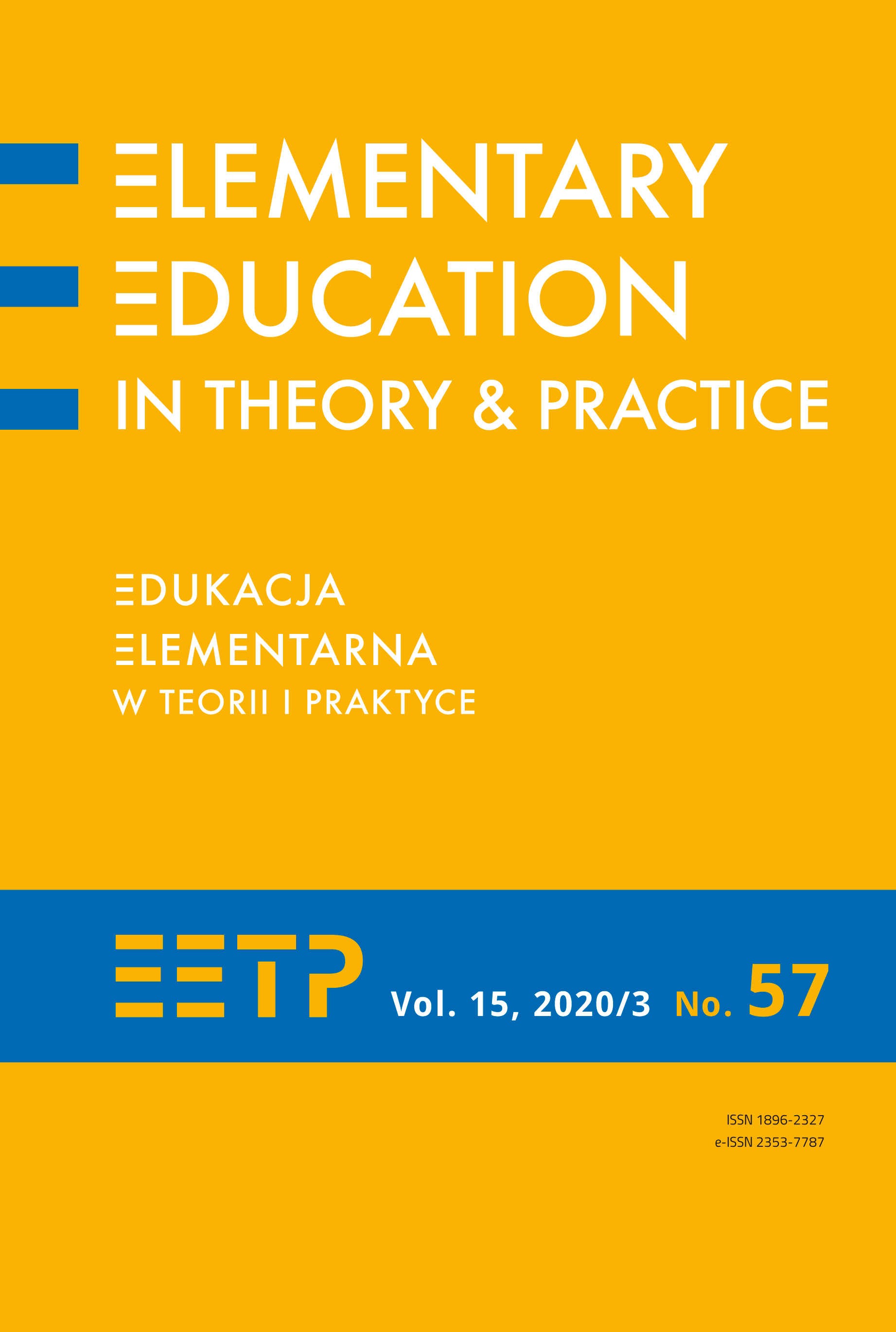A review of studies on developing a school prophylactic program to prevent social exclusion
Abstract
The aim of the article is to present scientific research based on an analysis of data concerning aggression in terms of pupils feeling insecure or vulnerable at school. The analysis was carried out as a systematic review of reports discussing research conducted in Poland. The article presents the evidence-based practice approach as a theoretical basis for the analysis, and the chosen research method—i.e., systematic review. The results of the research that is interpreted in the narrative synthesis indicate varied substantive and methodological value among the 33 analyzed reports, whose research objectives most often focused on determining the scale of aggression in schools and the factors that determine it. Conclusions and recommendations stemming from the survey of secondary sources are important, both for interdisciplinary theories constituting the basis for social prevention and preventative practice, especially for school pedagogues, who are responsible for implementing educational/prophylactic programs in schools and educational institutions. Prophylactic strategies refer directly to the exclusion–inclusion continuum, having the potential to prevent the appearance and perseverance of problematic behavior, which may consequently lead to social exclusion.
References
Borowska-Beszta B., Bartnikowska U., Ćwirynkało K. (2017). Analiza wtórna jakościowych danych zastanych: przegląd założeń teoretycznych i aplikacji metodologicznych [Secondary analysis of qualitative background data: A review of theoretical assumptions and methodological applications], “Jakościowe Badania Pedagogiczne,” vol. 2, no. 1, pp. 5–24.
European Monitoring Center for Drugs and Drug Addiction. (2011). Europejskie standardy jakości w profilaktyce uzależnień od narkotyków [European quality standards in drug addiction prevention] (Węgrzecka-Giluń J., Malczewski A. Polish editorial office), Warsaw: National Bureau for Drug Prevention.
Grabowska M., Gwiazda M. (eds.). (2019), Raport Młodzież 2018 [Youth 2018 Report], Warsaw: Ed. CBOS and KBPN.
Matera J., Czapska J. (2014). Zarys metody przeglądu systematycznego w naukach społecznych [Outline of the method of systematic review in social sciences], Warsaw: Educational Research Institute.
Mazur Z., Orłowska A. (2018). Jak zaplanować i przeprowadzić systematyczny przegląd literatury, [How to plan and conduct a systematic literature review], “Polskie Forum Psychologiczne,” vol. 23, no. 2, pp. 235–251. DOI: 10.14656/PFP20180202.
Szymańska J. (2012). Programy profilaktyczne. Podstawy profesjonalnej psychoprofilaktyki [Prevention programs: Basics of professional psychoprophylactics], Warsaw: Ośrodek Rozwoju Edukacji.
Świątkiewicz G. (2002). Profilaktyka w społecznościach lokalnych [Prevention in local com- munities], [in:] G. Świątkiewicz (ed.), Profilaktyka w środowisku lokalnym [Prevention in the local environment], Warsaw: National Bureau for Drug Prevention.
Regulation of the Minister of National Education of 14 February 2017 on the Core Curriculum of Preschool Education and the Core Curriculum of General Education for Primary School, Including Students with Moderate or Severe Intellectual Disability, General Education for First-Degree Vocational School, General Education for Special Job-Training School, and General Education for Post-Secondary School, Journal of Laws item 356.
Act of December 14, 2016 – Education Law (Journal of Laws 2017, item 59, as amended).
Copyright (c) 2020 Elementary Education in Theory and Practice

This work is licensed under a Creative Commons Attribution-NoDerivatives 4.0 International License.
- When submitting a text, the author declares that he/she is the Author of the article (hereinafter referred to as the “Work”) and:
- he/she owns the exclusive and unlimited copyright to the Work,
- is entitled to dispose of the copyright to the Work.
Declares that it does not infringe any third party copyrights or legal rights.
Declares that there is no conflict of interest.
2. At the same time, the Author grants the Ignatianum University in Cracowa royalty-free, non-exclusive and territorially unlimited licence to use the Work in the following fields of exploitation:
- recording the Work in a hard copy, as well as on a digital or magnetic medium;
- reproduction of the Work using any technique, without limitation of the number of editions or copies;
- distribution of the Work and its copies on any medium, including marketing, sale, lending, and rental;
- introduction of the Work into a computer memory;
- disseminating the Work in information networks, including in the Internet;
- public performance, exhibition, display, reproduction, broadcasting and re-broadcasting, as well as making the Work available to the public in such a way that everyone can have access to it at a time and place of their own choosing;
- within the scope of dependent rights to the Work, including in particular the right to make necessary changes to the Work resulting from editorial and methodical development, as well as to translate the Work into foreign languages;
The licence is granted from the moment of the transfer of the Work to the Ignatianum University in Cracow. The Ignatianum University in Cracow is entitled to grant further sub-licences to the Work within the scope of the right granted. The licence is time-limited and it is granted for a period of 15 years, starting from the date of its granting.
Authors are permitted and encouraged to publish their text online (e.g. in their institution’s repository or on the institution’s website) before or during the submission process as this may lead to beneficial exchanges, as well as earlier and greater citation of the published text (See The Effect of Open Access). We recommend using any of the following portals of research associations:
- ResearchGate
- SSRN
- Academia.edu
- Selected Works
- Academic Search




